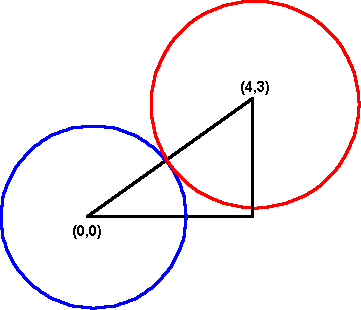Circle A has a center at #(3 ,2 )# and a radius of #6 #. Circle B has a center at #(-2 ,1 )# and a radius of #3 #. Do the circles overlap? If not, what is the smallest distance between them?
1 Answer
Mar 14, 2016
The distance
In this case, they do, so the circles overlap.
Explanation:
If the two circles overlap, this means that the least distance

(numbers in picture are random from the internet)
So to overlap at least once:
The Euclidean distance
Therefore:
The last statement is true. Therefore the two circles overlap.
